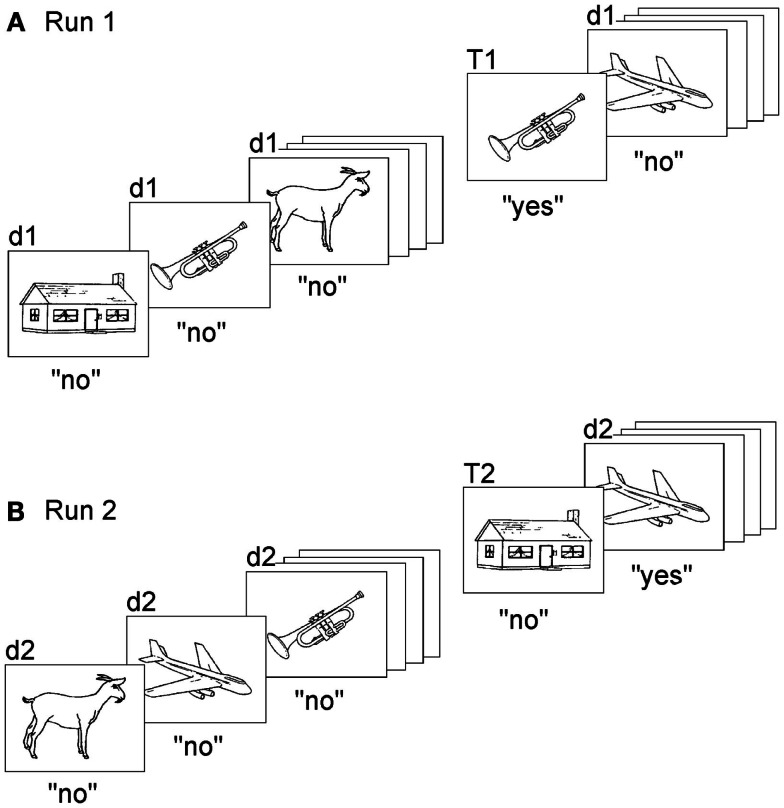Figure 2.
Task to measure the sense of present reality. Subjects make two runs (or more) of a continuous recognition task, each run composed of the same set of pictures. Subjects have to indicate, in both runs, only repetitions within the ongoing run (original version: Schnider et al., 1996a). (A) The first run demands learning and recognition and can be solved on the basis of familiarity alone. (B) In the second run, all items are already familiar. The task now demands the ability to distinguish between memories that pertain to the ongoing run (repetitions within the run, T2) and memories that do not (d2; not previously presented within the run, albeit familiar from the first run). Confabulating patients had a steep increase of false positives in response to d2 stimuli. “d” denotes “distracters,” i.e., pictures’ first appearance within a run; “T” denotes targets, i.e., repeated pictures within the run. “d1” and “T1” are stimuli presented in the first run, “d2” and “T2” are stimuli of the second run. “Yes” and “no” indicate correct responses. Illustration reproduced from Schnider (2008), with permission.

